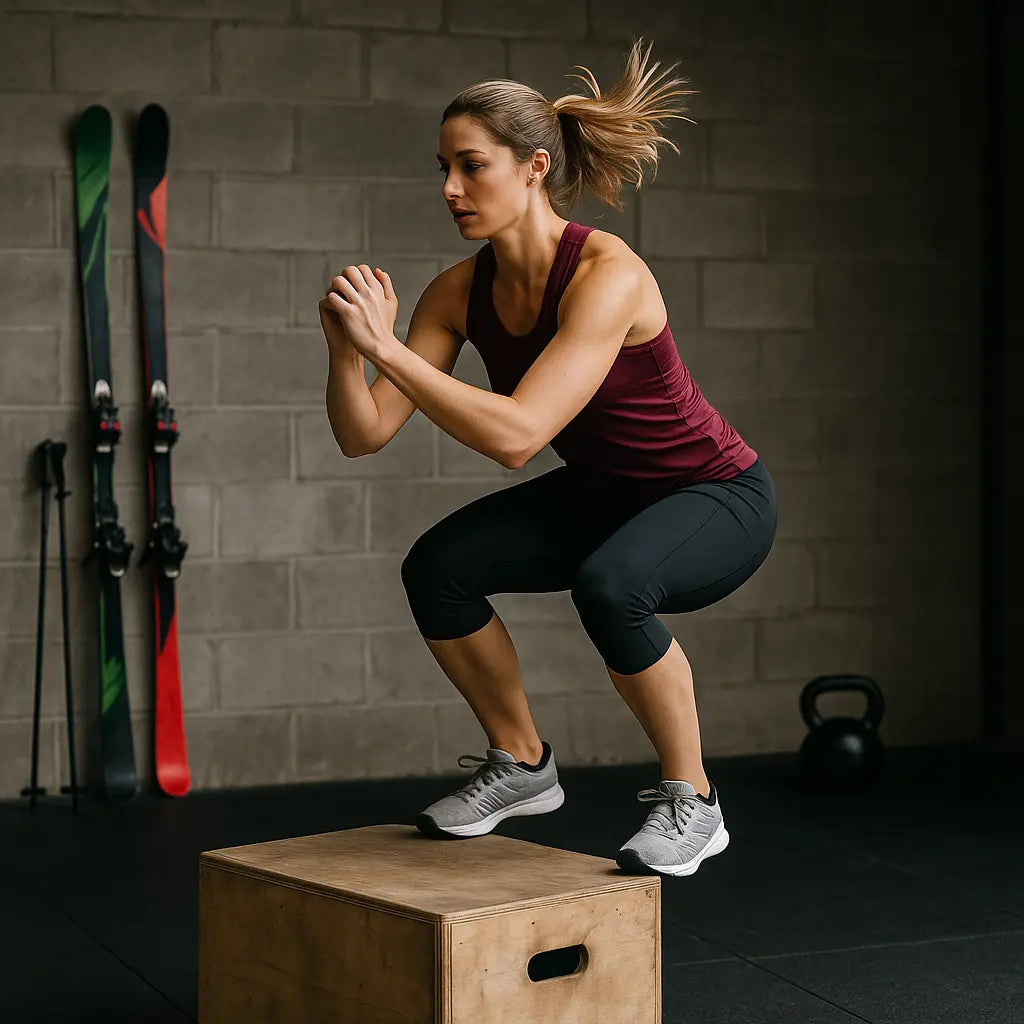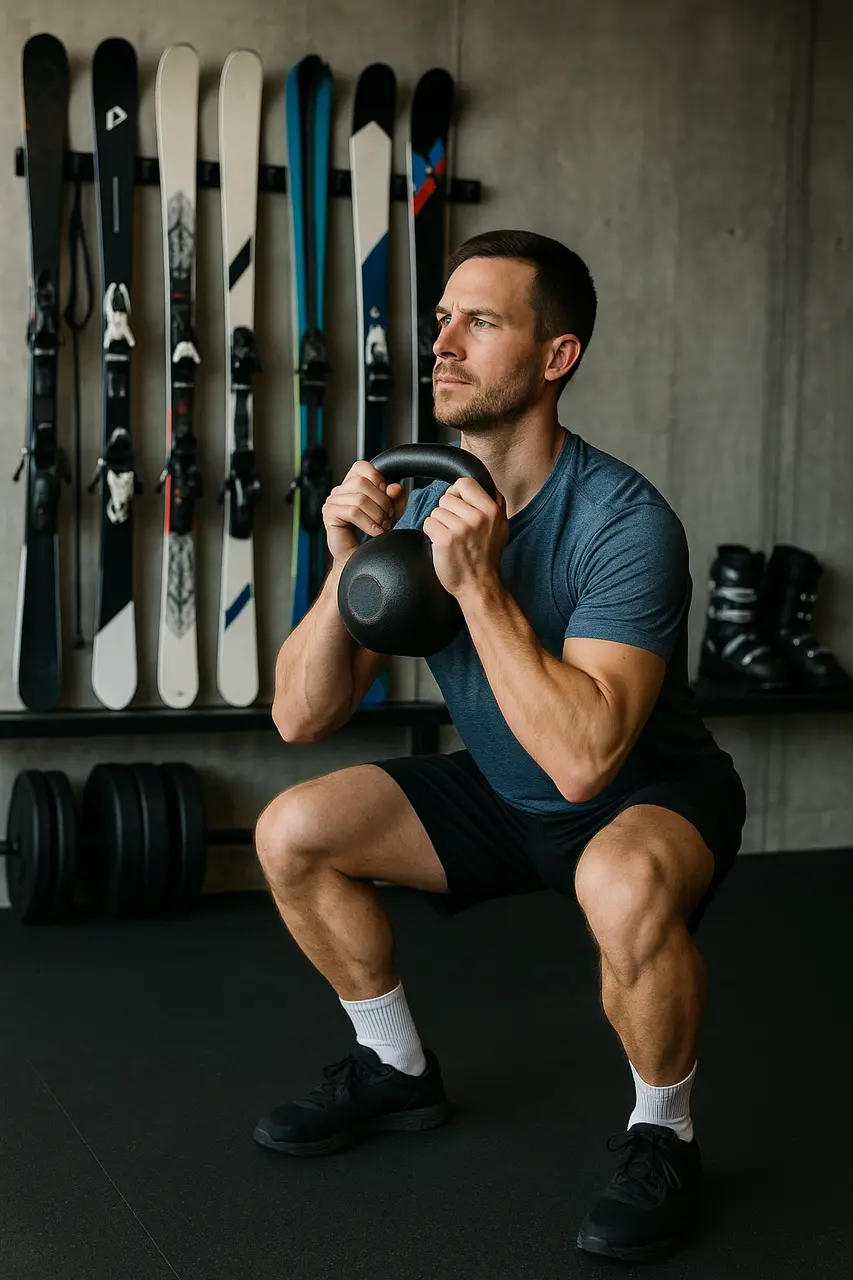As the ski season approaches, it’s time to start thinking about how to prepare your body for the slopes. Whether you’re a seasoned skier or a beginner, getting fit for skiing can enhance your performance and prevent injuries. In this blog, we’ll cover everything you need to know to get ski-fit, ensuring you have a fantastic time on the mountains.
Understanding the Physical Demands of Skiing
Skiing is a dynamic sport that requires a combination of strength, endurance, balance, and flexibility. Understanding the physical requirements can help tailor your fitness routine to meet these demands effectively.
Firstly, the strength of your lower body is crucial, as these muscles bear the brunt of the activity. When you’re carving down a slope, the quadriceps, hamstrings, and glutes work continuously to maintain stability and control. But that’s not all; your core muscles are equally vital. They help in stabilizing your body while making turns and controlling speed. Engaging in core exercises will enhance your ability to navigate between runs seamlessly, thus reducing the risk of falls.
Endurance is another important aspect, as skiing is often a prolonged physical activity. You’ll be moving frequently and navigating challenging terrains which require sustained energy. Lastly, the importance of flexibility can’t be overstated. The ability to stretch and move your body effectively can greatly aid in adapting to various skiing conditions and using different techniques to perfect your skills.
Building Your Cardiovascular Fitness
Cardiovascular endurance is essential for skiing, as it ensures you can sustain energy throughout your runs. We’ll explore some cardio exercises that can help boost your stamina on the slopes.
To get started with cardiovascular training, incorporate activities like running or cycling. These exercises not only help build aerobic capacity but also enhance lung function, ensuring you remain energetic during your skiing sessions. Consider interval training, which involves alternating between high-intensity bursts of activity and lower-intensity recovery periods. This method is excellent for simulating ski conditions where you might exert more effort during thrilling downhill runs and less on flat surfaces.
Participating in swimming is another excellent option, as it’s a full-body workout that improves your cardiovascular endurance while being gentle on the joints. The rhythmic breathing required during swimming also mimics the controlled breathing needed in skiing, making it a perfect preparatory exercise. Integrating daily cardio workouts into your routine will optimize your stamina, allowing you to perform consistently over long durations on the slopes.
Strength Training for Skiing
Strength training focuses on building the muscles you use most while skiing. Learn about specific exercises that strengthen your legs, core, and upper body to improve your performance and prevent injuries.
Incorporating exercises such as squats and lunges can significantly develop your leg muscles, which are key players in skiing. Squats help target the quadriceps, glutes, hamstrings, and calves, providing the necessary power and endurance for downhill skiing. Lunges, on the other hand, enhance balance and coordination, both of which are essential to maintain control on varied terrains.
Do not overlook the importance of upper body strength. Exercises like push-ups and pull-ups can increase your overall muscle endurance, giving you the ability to manage ski poles effectively. Furthermore, engaging in plank exercises can fortify your core, enhancing your stability and reducing the likelihood of straining your back. Building a strong core will give you better rotational power and responsiveness on the slopes.
The Importance of Flexibility and Balance
Flexibility and balance are key to maneuvering efficiently on skis. We’ll discuss stretching routines and balance exercises that can enhance your agility and coordination.
Implementing yoga into your routine can greatly benefit your flexibility. Yoga poses such as the Downward Dog or Pigeon Pose focus on stretching key muscles you use while skiing, such as the calves, back, and hips. These stretches prepare your body for the extensive movements required on slopes and help prevent injuries.
Balance exercises can be as simple as standing on one leg or using a balance board to simulate the uneven surfaces found during skiing. Regularly practicing these exercises will improve your balance and coordination, both crucial for adjusting to quick changes in direction while skiing. Balance training can make your skiing more efficient and enjoyable.
Creating Your Ski Fitness Plan
Putting it all together, we’ll guide you in creating a balanced ski fitness plan. From setting realistic goals to scheduling your workouts, you’ll be ready to hit the slopes with confidence.
Start by identifying your current fitness level and define your ski-specific goals. This may include improving endurance for longer ski days or enhancing strength for more challenging runs. A mix of cardiovascular, strength, and flexibility training should be incorporated into your weekly routine. Consistently rotating these workouts ensures no single muscle group is overly strained, thus maximizing overall effectiveness.
Be sure to include proper rest and recovery days in your plan. Allowing time for your muscles to rebuild and strengthen is crucial for improving performance and preventing burnout. As you craft your ski fitness plan, remember to stay adaptable. Unexpected schedule changes or physical setbacks can occur, so being flexible with your training schedule can keep you on track without adding undue stress.
For those needing extra guidance, our website offers comprehensive ski fitness programs and training tips. Utilize these resources to tailor a regimen that precisely fits your needs and ensures you’re fully prepared for the upcoming ski season.
Get Ready for an Incredible Ski Season
Preparing your body for skiing not only enhances your performance but also increases your enjoyment on the slopes. By following a well-rounded fitness plan, focusing on cardiovascular health, strength, flexibility, and balance, you’ll be in top shape for the ski season. Remember, consistency is key, so start early and enjoy the process. Happy skiing!



Share:
Chasing Snow: How to Plan the Perfect Ski Road Trip
Heliskiing: Most Necessary and Best Gear for the Upcoming Season